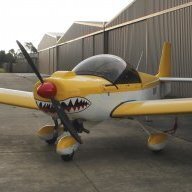Thanks Jim & John,
Points noted (oh dear - what a pun!)
You've given me plenty to think about. I think I'll get the engine running on the existing points and build an electronic ignition with the ability to take any firing input. Ultimately I want a dual system for redundancy probably using a coil joiner as Jim suggests. The difficulty in converting the Hitachi dissy seems to rest with the shaft mounted magnet assembly or whatever. There seems to be a number of possibilties with modules if you only want to use them for a firing signal, but the operating magnet needs to fit the shaft correctly. Jim's idea of the Mitsubishi distributor is a good possibility as is the ND unit. I read an article yesterday about converting both types. It seems to be a case of seeing what modules are available and what will fit the shaft of the dissy. Your system looks interesting 'ARRON 25'. What about some pics, although the mention of milling makes me run away, having a drill stand as my only major tool.
Paul Toone



